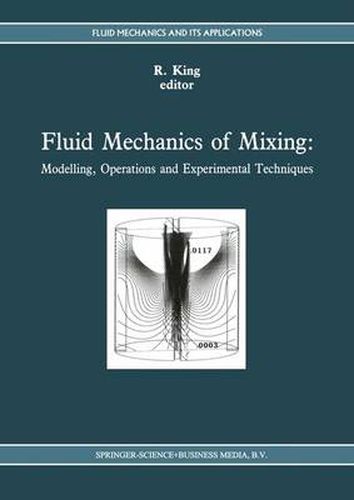Readings Newsletter
Become a Readings Member to make your shopping experience even easier.
Sign in or sign up for free!
You’re not far away from qualifying for FREE standard shipping within Australia
You’ve qualified for FREE standard shipping within Australia
The cart is loading…






This volume is a selection of the edited papers presented at the Seventh European Mixing Congress. It is concerned exclusively with mixing in circular section vessels, using centrally mounted paddles of similar impellers. The contents are arranged under three classifications: modelling of mixing processes, mixing operations and experimental techniques. This arrangement should assist the reader in identifying the topic area by function of application, rather than by technology. In this volume the sections on modelling contain papers which focus on the representation of the mixing process, whether by equation, scale-up criteria or fluid dynamic simulation. Similarly, mixing operations are concerned with the application or function of the mixing process, such as mass transfer, heat transfer or mixing time. Experimental techniques addresses the tools the researcher needs to use at the data gathering exprimental stage. It collects together the advances made in the various methods used by some of the foremost researchers, and indicates those areas still in need of additional instrumentation of methods of data reduction. The volume should be of interest to engineering researchers, designers and users of mixing equipment, and to those planning research and development programmes who wish to keep up to date with advances in the basic technology and its applications.
$9.00 standard shipping within Australia
FREE standard shipping within Australia for orders over $100.00
Express & International shipping calculated at checkout
This volume is a selection of the edited papers presented at the Seventh European Mixing Congress. It is concerned exclusively with mixing in circular section vessels, using centrally mounted paddles of similar impellers. The contents are arranged under three classifications: modelling of mixing processes, mixing operations and experimental techniques. This arrangement should assist the reader in identifying the topic area by function of application, rather than by technology. In this volume the sections on modelling contain papers which focus on the representation of the mixing process, whether by equation, scale-up criteria or fluid dynamic simulation. Similarly, mixing operations are concerned with the application or function of the mixing process, such as mass transfer, heat transfer or mixing time. Experimental techniques addresses the tools the researcher needs to use at the data gathering exprimental stage. It collects together the advances made in the various methods used by some of the foremost researchers, and indicates those areas still in need of additional instrumentation of methods of data reduction. The volume should be of interest to engineering researchers, designers and users of mixing equipment, and to those planning research and development programmes who wish to keep up to date with advances in the basic technology and its applications.